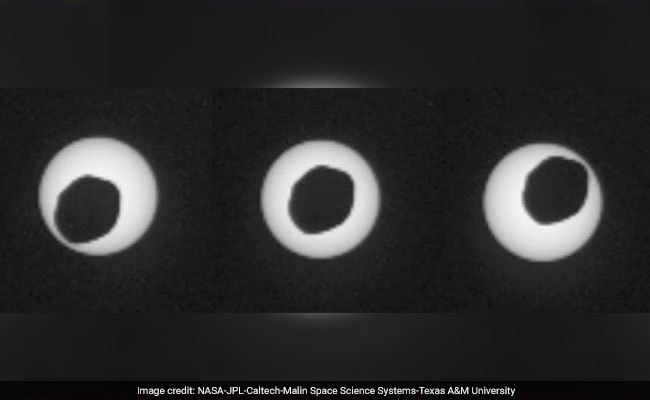Many astronomical events this season will be visible right from your backyard without the use of a telescope although the chilly winter nights may require a few extra layers to keep warm.
Here are five astronomy events to mark on your calendar this winter:
1. Ursid meteor shower: Dec. 21-22
The first night of winter will feature the final meteor shower of 2017 as the Ursid meteor shower reaches its peak.
The Ursid meteor shower is considered minor, since it produces up to 10 meteors an hour during its peak on the night of Thursday, Dec. 21, into the early morning hours of Friday, Dec. 22.
Occasionally, the Ursids can have bursts of 100 meteors per hour, but an outburst like this is not expected this year.
Although no outburst is expected, this year will be a good year for viewing the Ursids since the shower peaks just days after the new moon. This means that there will be little natural light pollution for the meteor shower to contend with, allowing onlookers to see many of the dimmer meteors.
The best time for viewing the shower will be after midnight, with meteors appearing in all areas of the sky.
2. Quadrantid meteor shower: Jan. 3-4
Stargazers will be able to kick off the new year with a major meteor shower as the Quadrantids peak during the first days of 2018.
Unlike many major meteor showers, the Quadrantids peak over a short period lasting less than 24 hours. So, if you miss the shower on the peak night, then it may mean missing the shower completely.
In 2018, the meteor shower is anticipated to peak around Wednesday, Jan. 3, into the early morning of Thursday, Jan. 4.
Not only does the Quadrantid meteor shower have a short period of high activity, but it also brings a range of meteors visible per hour.
Onlookers have counted as many as 100 meteors per hour during the height of the Quadrantids, but that may not be the case this year.
Light pollution from the nearly full moon will make it difficult to see the dimmer meteors, reducing the hourly rate to around 25 to 50 meteors per hour.
3. The Super Blue Moon Eclipse: Jan. 31
January will feature an uncommon celestial occurrence as a blue moon coincides with a full supermoon.
Both of January’s full moons will be considered supermoons, appearing bigger and brighter than a normal full moon.
The full moon on Jan. 31 will also earn the nickname of a blue moon as it is the second full moon to occur in one calendar month. Contrary to the name, the moon will not actually appear blue.
A total lunar eclipse will also be visible for part of the world on the night of the super blue moon as the moon passes directly through the Earth’s shadow.
The total lunar eclipse will be visible across eastern Asia, Australia, Alaska and northwestern Canada. The rest of Asia and North America will be able to see a partial eclipse.
This is the first time that a total lunar eclipse occurred during a blue moon since Dec. 30, 1982.
4. Planetary alignment in the pre-dawn sky: March 8
Early risers will be greeted with a planetary alignment in early March as Jupiter, Mars and Saturn appear in a line each morning before dawn.
The Moon will fall in line with the planets on March 8, appearing directly between Jupiter and Mars in the southern sky.
This will be an excellent opportunity for people new to astronomy as the moon will serve as an easy reference point for finding the planets, all of which are visible to the unaided eye.
This planetary alignment will also help people find Pluto, which is too dim to see without the help of a telescope or pair of binoculars.
Pluto will fall in line with the other planets, appearing slightly lower and to the left of Saturn. March 12 may be the easiest day to find Pluto as it will appear just to the right of the crescent moon.
5. Mercury pairs up with Venus after sunset: March 15
One of the hardest planets to spot with the naked eye will be visible shortly after sunset during the middle of March.
Mercury can be difficult to spot due to its proximity to the sun, but on March 15, it will reach its greatest eastern elongation. This means that it will appear at its farthest distance from the sun allowing it to be visible after sunset.
To see Mercury, people will need to have a clear view of the western horizon and look before the planet drops below the horizon, which will occur around 75 minutes after sunset.
Venus will also appear in the western sky after sunset, making it easier to find the elusive Mercury.
Venus appears brighter than Mercury, so once Venus is visible in the sky, Mercury will be able to be spotted slightly higher and to the right.
These planets will appear near each other for several days shortly after sunset, so if clouds obscure the western horizon on March 15, there will be other opportunities to look for Venus and Mercury.
Courtesy: accuweather.com


